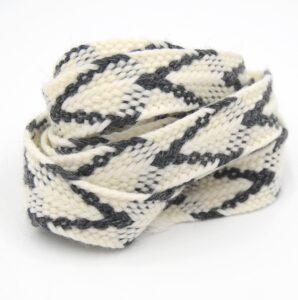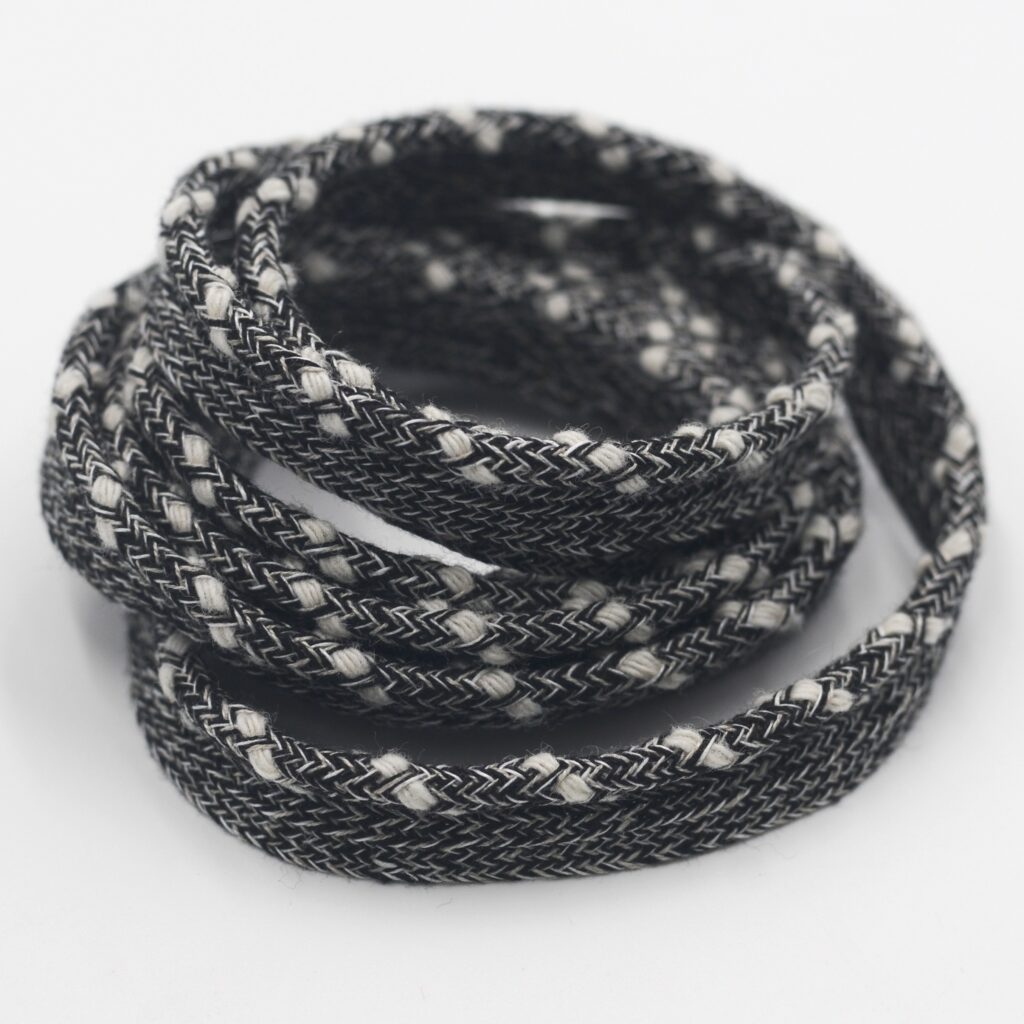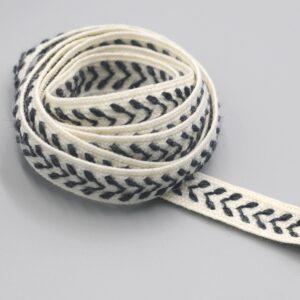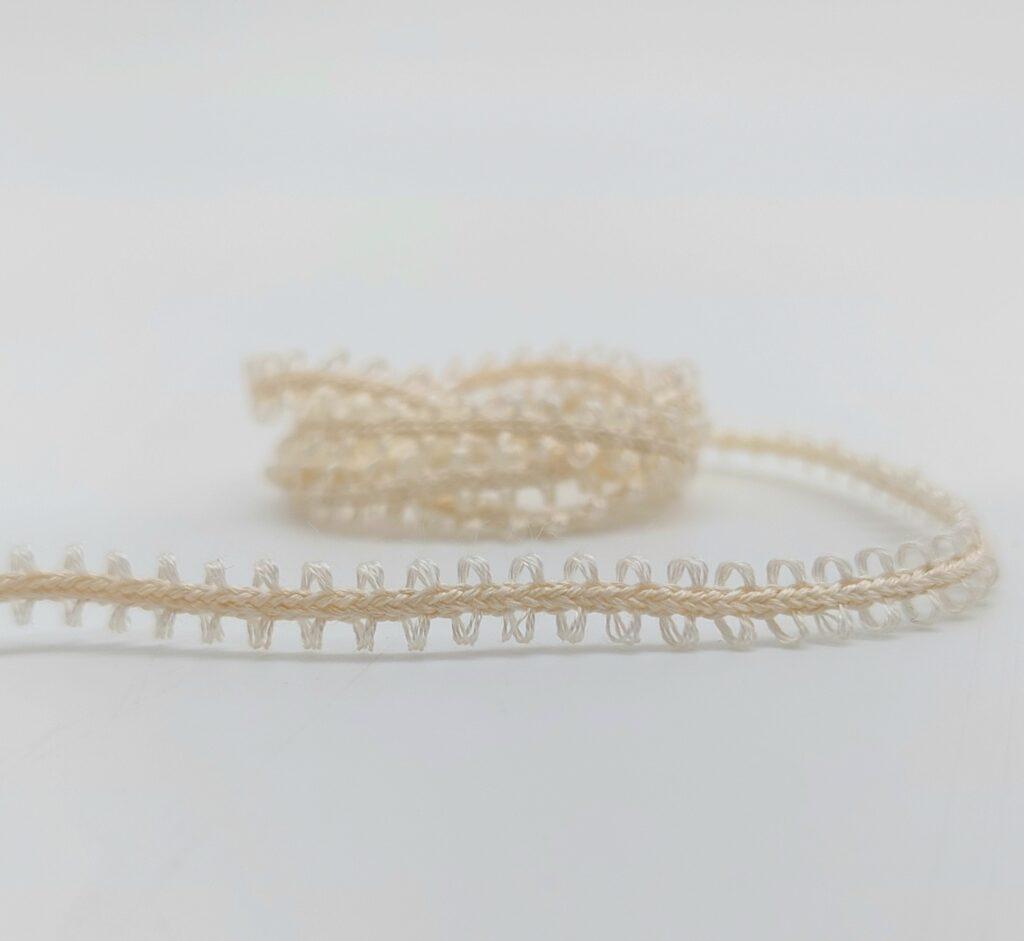Wool, the natural animal material
A member of the Collectif Tricolor* from the outset, Société Choletaise de Fabrication is a committed player in the sheep wool industry. The Collectif has made wool, a natural animal material par excellence, its hobbyhorse.
SCF also uses silk in the manufacture of its products for the fashion and furniture sectors, and for embroiderers.
*The “Collectif Tricolor” brings together all the players involved in wool processing. It is made up of four working groups, four colleges, which work together to put in place a common vision. Members of the breeding, know-how, brand and expert colleges meet in thematic committees to develop pilot projects. These projects are helping to reorganise the French wool industry by creating new standards day by day.
Virgin sheep wool
Sheep’s wool
Virgin sheep’s wool production is set to reach 1.95 million tonnes in 2021, according to data collected by Textile Exchange. Responsible wools account for 3% of the sector.
In France, wool production has a long history, dating back to medieval times when wool was one of the country’s main industries. Today, it is relatively low compared with other countries such as Australia, New Zealand and China.
French wool production focuses mainly on local breeds of sheep, such as Mérinos d’Arles, Mérinos de Rambouillet and Rouge de l’Ouest. These breeds are bred for their particularly fine, soft and warm wool, making this animal fibre a high-quality product. France’s high standards of animal welfare and environmental sustainability make it an ethical and sustainable source of wool with a smaller environmental footprint.
Wool technical properties
The technical properties of French wool are outstanding:
- A thermal insulator, it helps regulate body temperature by keeping heat close to the body in winter and letting the skin breathe in summer.
- Wear-resistant, it lasts over time without deforming or tearing.
- Stain-resistant, its natural texture repels stains and dirt, making it an excellent choice for rugs, blankets and outerwear
- Absorbent, wool can absorb up to 30% of its own weight, making it comfortable to wear Elastic, it can deform and return to its original shape



SCF’s wool
SCF provides its customers with wools from the French wool industry, including wools from the Collectif Tricolor, high-quality, sustainable wools:
- wool yarns in counts ranging from the finest to the thickest
- natural undyed wool yarns
- ready-to-dye wool yarns, to develop your own colours
- a range of colours according to yarn count
Wool can be braided, woven or knitted. It can be worked into cordons, laces, braids, ropes, or used to make exceptional products such as piping, serpentines, etc.
Silk
Silk
Silk is one of the most precious and sought-after natural fibres in the world. It has a long history dating back over 4.000 years in China, where it was once considered a national treasure. Every year, the world produces around 150.000 tonnes of silk, with China the leading producer, accounting for almost 90% of total production.
France also has a long tradition of silk production, particularly in the Lyon region, known as the silk capital of France. It has played a central role in the silk industry since the 16th century. Silk is also produced in the Cévennes region and in the south-west of France.
Despite its more limited production compared with other countries, French silk remains a symbol of elegance and craftsmanship in the textile industry.
Silk technical properties
The technical properties of silk are remarkable:
- Tensile strength: Silk is very strong, with excellent tensile strength. It is stronger than many other textiles, including steel of the same diameter. This means it can withstand high loads without tearing easily.
- Elasticity: Silk has good elasticity, allowing it to deform under tension and return to its original shape once the tension is released. This makes it resistant to permanent deformation and gives it great durability
- Lightweight: Silk is a lightweight fibre, making it comfortable to wear. It feels soft and fluid against the skin, making it a popular choice for luxury garments.
- Thermoregulation: Silk has the ability to regulate body temperature. It is able to maintain body heat in cold weather while allowing good heat evacuation in hot weather. This makes it comfortable to wear in a variety of weather conditions

- Moisture absorption: Silk has a great capacity to absorb moisture, allowing it to breathe and release excess body moisture. It also absorbs perspiration, helping to keep skin dry and comfortable
- Insulation: Silk has insulating properties, making it ideal for winter clothing. It traps warm air close to the body, creating an extra layer of thermal insulation.
- Resistant to dust mites and mould: Silk is naturally resistant to dust mites and mould, making it hypoallergenic and ideal for allergy sufferers and those with sensitive skin
- Glossy and soft to the touch: Silk has a lustrous sheen and soft texture that sets it apart from other fibres. This gives it a luxurious appearance and a pleasant feel on the skin
SCF’s silk
SCF offers its customers silks with different characteristics: silk bourette, silk schappe and raw silk.
- silk bourette, silk schappe and raw silk in various thread counts.
- colour development possible
- range of colours on request
Our customers use it for clothing, furnishings, household linen, lingerie and accessories.
Types of silk
There are different qualities of silk depending on how the silkworm cocoon is treated:
- Raw silk: continuous thread of approximately 1,000 to 1,200 m. This silk has a glossy finish
- Schappe of silk: a discontinuous thread of fibres ranging from 8 to 30 cm. This silk is matt and slightly softer than the others. It is the “waste” from the raw silk. The longest fibres are used to make schappe silk and the shortest to make bourrette silk
- Silk bourette: a discontinuous, irregular thread of very short fibres, less than 8 cm. This silk is matt, with a feel akin to linen. Its threads are thicker and very strong
SCF, involved in the textile industry since 1967
Sheep’s wool


Virgin sheep’s wool production is set to reach 1.95 million tonnes in 2021, according to data collected by Textile Exchange. Responsible wools account for 3% of the sector.
In France, wool production has a long history, dating back to medieval times when wool was one of the country’s main industries. Today, it is relatively low compared with other countries such as Australia, New Zealand and China.
French wool production focuses mainly on local breeds of sheep, such as Mérinos d’Arles, Mérinos de Rambouillet and Rouge de l’Ouest. These breeds are bred for their particularly fine, soft and warm wool, making this animal fibre a high-quality product. France’s high standards of animal welfare and environmental sustainability make it an ethical and sustainable source of wool with a smaller environmental foot.
Wool technical properties
The technical properties of French wool are outstanding:
- A thermal insulator, it helps regulate body temperature by keeping heat close to the body in winter and letting the skin breathe in summer.
- Wear-resistant, it lasts over time without deforming or tearing.
- Stain-resistant, its natural texture repels stains and dirt, making it an excellent choice for rugs, blankets and outerwear
- Absorbent, wool can absorb up to 30% of its own weight, making it comfortable to wear Elastic, it can deform and return to its original shape
SCF’s wool
SCF provides its customers with wools from the French wool industry, including wools from the Collectif Tricolor, high-quality, sustainable wools:
- wool yarns in counts ranging from the finest to the thickest
- natural undyed wool yarns
- ready-to-dye wool yarns, to develop your own colours
- a range of colours according to yarn count
Wool can be braided, woven or knitted. It can be worked into cordons, laces, braids, ropes, or used to make exceptional products such as piping, serpentines, etc.
silk

Silk is one of the most precious and sought-after natural fibres in the world. It has a long history dating back over 4.000 years in China, where it was once considered a national treasure. Every year, the world produces around 150.000 tonnes of silk, with China the leading producer, accounting for almost 90% of total production.
France also has a long tradition of silk production, particularly in the Lyon region, known as the silk capital of France. It has played a central role in the silk industry since the 16th century. Silk is also produced in the Cévennes region and in the south-west of France.
Despite its more limited production compared with other countries, French silk remains a symbol of elegance and craftsmanship in the textile industry.
Silk technical properties
The technical properties of silk are remarkable:
- Tensile strength: Silk is very strong, with excellent tensile strength. It is stronger than many other textiles, including steel of the same diameter. This means it can withstand high loads without tearing easily.
- Elasticity: Silk has good elasticity, allowing it to deform under tension and return to its original shape once the tension is released. This makes it resistant to permanent deformation and gives it great durability
- Lightweight: Silk is a lightweight fibre, making it comfortable to wear. It feels soft and fluid against the skin, making it a popular choice for luxury garments.
- Thermoregulation: Silk has the ability to regulate body temperature. It is able to maintain body heat in cold weather while allowing good heat evacuation in hot weather. This makes it comfortable to wear in a variety of weather conditions
- Moisture absorption: Silk has a great capacity to absorb moisture, allowing it to breathe and release excess body moisture. It also absorbs perspiration, helping to keep skin dry and comfortable
- Insulation: Silk has insulating properties, making it ideal for winter clothing. It traps warm air close to the body, creating an extra layer of thermal insulation.
- Resistant to dust mites and mould: Silk is naturally resistant to dust mites and mould, making it hypoallergenic and ideal for allergy sufferers and those with sensitive skin
- Glossy and soft to the touch: Silk has a lustrous sheen and soft texture that sets it apart from other fibres. This gives it a luxurious appearance and a pleasant feel on the skin
SCF’s silk
SCF offers its customers silks with different characteristics: silk bourette, silk schappe and raw silk.
- silk bourette, silk schappe and raw silk in various thread counts.
- colour development possible
- range of colours on request
Our customers use it for clothing, furnishings, household linen, lingerie and accessories.
Types of silk
There are different qualities of silk depending on how the silkworm cocoon is treated:
- Raw silk: continuous thread of approximately 1,000 to 1,200 m. This silk has a glossy finish
- Schappe of silk: a discontinuous thread of fibres ranging from 8 to 30 cm. This silk is matt and slightly softer than the others. It is the “waste” from the raw silk. The longest fibres are used to make schappe silk and the shortest to make bourrette silk
- Silk bourette: a discontinuous, irregular thread of very short fibres, less than 8 cm. This silk is matt, with a feel akin to linen. Its threads are thicker and very strong
